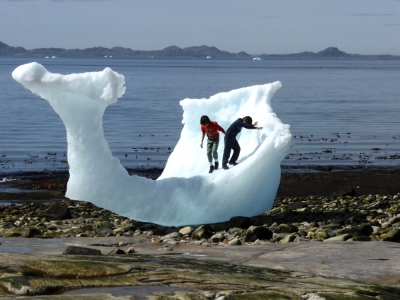No reason to panic: The state of Arctic ice mass and Greenland

Sea ice levels are quite important to the discussion surrounding climate change. This is because changes in sea ice volume are considered the most tangible impact of changes in global temperature levels.
Climatologists and climate change enthusiasts have thus always followed the changes in Arctic and Antarctic sea ice volume. And Greenland also has been at the center of attention, as it hosts the largest ice mass outside of the polar regions.
Of the three regions, Antarctica has seen the most consistent gain in sea ice volume (increasing in mass during the past three decades, peaking in 2014). Since this statistic does not fit well with the alarmist doomsday agenda, climate alarmists have largely ignored Antarctica and focused on the Arctic and Greenland, the decrease in Arctic sea ice volume particularly touted as proof of global warming.
Al Gore, in his 2006 climate change documentary An Inconvenient Truth, suggested that both the Arctic and Antarctic would face a huge loss of ice because of global warming. However, contrary to popular claims, measurement of sea ice in these regions actually reveals that there has been no drastic reduction in volume, and global temperature has been largely stable, not headed towards apocalypse.
Arctic Sea Ice Volume
Prior to the Modern Warm Period (18th century to the present), the world was in a deep freeze known as the Little Ice Age (LIA). According to paleoclimate records, the highest Arctic sea ice levels in 10,000 years were observed during the LIA. This 10,000-year-old climate period is also known as Holocene.
Arctic sea ice volume has been on a steady decline during the last three centuries. The primary reason for this decline is the onset of the Modern Warm Period during the 18th century.
However, although Arctic sea ice volumes began declining after the end of the LIA in the 17th century, the decrease is not unprecedented, and the volume of sea ice is nowhere near the lowest recorded levels. Rather, Arctic sea ice is still at one of its highest levels in 10,000 years.
Furthermore, rising carbon dioxide emissions have failed to cause any drastic reduction in Arctic sea ice volumes. This corresponds to the stability of global temperature levels, which have shown poor correlation with rising concentration of atmospheric CO2.
2016 was the worst year for Arctic sea ice as a strong El Niño caused a dramatic increase in temperature globally. But sea ice returned to normal levels once the El Niño ended in 2016. Most recently, Arctic sea ice thickness for 2019 has shown no major deviation from the 9-year average (2004–2013) and has mostly displayed a close correlation with the thickness of sea ice observed during 2015.
However, nothing of this makes it into the alarmist news articles in our mainstream media. Instead they continue to peddle lies and fear, buoyed by even more and greater lies from authoritative figures like Al Gore.
The Greenland Ice Sheet
Greenland, like the Arctic, has shown no signs of abnormal deviation in the past three decades.
Danish Arctic research institutions provide up-to-date advanced data on Greenland’s ice sheet; gains and losses are carefully recorded in their Polar Portal site. Greenland’s ice sheet surface mass balance for 2018–19 is similar to the 30-year mean running from 1981 to 2010 and, in fact, overshot the mean during the winter of 2018–19. Even the drastic melting in July, 2019, is well within the levels of the 30-year mean.
However, the alarmist media provoke panic among the public whenever there is a steep decline. They do this by providing no context, totally ignoring the historic changes in the ice sheet and how the present decline or increase corresponds to the mean values.
Scientifically, there is no reason for panic about the volume of sea ice or the impact of changing climate on our polar regions and Greenland. On a purely historical basis, we have every reason to be happy that we live in a time to of continuing health and stability of our polar regions.
Vijay Jayaraj (M.Sc., Environmental Science, University of East Anglia, England), Research Associate for Developing Countries for the Cornwall Alliance for the Stewardship of Creation, lives in Bangalore, India.





















